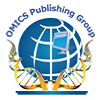Research Article
Study on Catalytic Ozone Oxidation with Nano-TiO2 Modified Membrane for Treatment of Municipal Wastewater
Yueqi Zhu1, Hongwei Zhang1,2* and Xuehua Zhang1,21School of Environmental Science and Engineering, Tianjin University, 300072, China
2School of Economics, Tianjin Polytechnic University, 300160, China
- Corresponding Author:
- Hongwei Zhang
School of Environmental Science and Engineering
Tianjin University, 300072, China
Tel: +86 13821653658
Fax: +86 022 23121662
E-mail: hunanzhilv@163.com
Received date August 16, 2013; Accepted date October 10, 2013; Published date October 17, 2013
Citation: Zhu Y, Zhang H, Zhang X (2013) Study on Catalytic Ozone Oxidation with Nano-TiO2 Modified Membrane for Treatment of Municipal Wastewater. J Biomim Biomater Tissue Eng 18:113. doi:10.4172/1662-100X.1000113
Copyright: © 2013 Zhu Y, et al. This is an open-access article distributed under the terms of the Creative Commons Attribution License, which permits unrestricted use, distribution, and reproduction in any medium, provided the original author and source are credited.
Abstract
In this paper, we studied the application of Nano-TiO2 Modified membrane technology in municipal wastewater treatment, which has not been previously reported to exhibit in this area. Ozone (O3) aeration can produce a large number of high oxidizing free radicals (hydroxyl radical HO•) to degrade organic matters when ozone contacts with nano- TiO2 Modified membrane, which process is called catalytic ozone oxidation process. This approach is a new frontier of municipal wastewater treatment, which has excellent reactive activity and degradation of organic compounds without the need of catalyst recycling. Our purpose is to remove organic matters by ozone aeration pre-treatment and nano-TiO2 modified membrane. This method is more efficient since it combines both chemical oxidation and physical filtration. In this study, municipal sewage is called raw water. Polyvinylidene fluoride (PVDF) and the nano-TiO2 modified PVDF ultrafiltration membranes are selected as experimental materials. Results suggest that the removal rate of organic matters with this new method (TiO2+O3) is 66.4%, which is 13.3% higher than original membrane with O3 (PVDF+O3) under the same condition. Therefore we can extract that, this part of contribution belongs to catalytic ozone oxidation process on TiO2 modified membrane. Compared with traditional PVDF membrane filtration, whose removal rate is 38.7%, this novel approach has a removal rate 27.7% higher.

 Spanish
Spanish  Chinese
Chinese  Russian
Russian  German
German  French
French  Japanese
Japanese  Portuguese
Portuguese  Hindi
Hindi